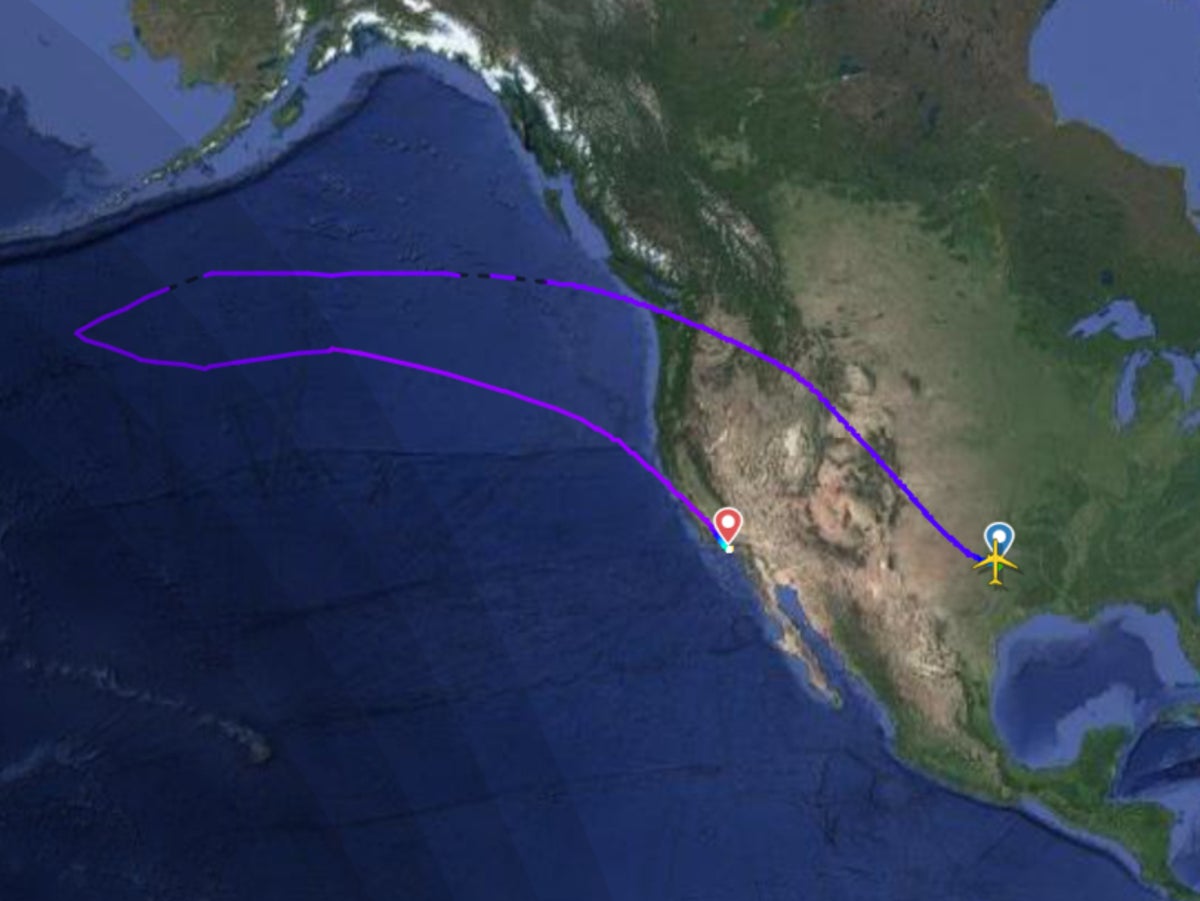
A recent American Airlines flight took 12 hours to fly between Dallas Fort Worth, Texas to Los Angeles, California – a trip that normally takes just over three hours.
The worst part for frustrated passengers was that their intended destination had been Tokyo.
The 28 May service to the Japanese capital was more than seven hours into its standard route to Narita airport and was flying over the North Pacific Ocean when it was forced to make a U-turn.
“Weather conditions” were the cause of the disruption: more specifically, a volcanic eruption in Bezymianny, a peninsula off the east coast of east Russia.
The eruption was close enough to the planned flight path that the airline took the decision to turn back to the US.
Other carriers flying similar routes the same day completed their journeys, opting to add on an hour’s flight time by re-routing further south to avoid the airspace close to the eruption, notes aviation site One Mile at a Time.
For example, United Airlines flight UA837 from San Francisco to Tokyo and United Airlines flight UA7 from Houston to Tokyo both took an hour longer than usual, but arrived at their intended destinations.
By the time AA’s flight touched down at LAX, it had been airborne for just under 12 hours – an hour less than the entire Dallas-Tokyo scheduled flight duration would have been (12hr 55m).
It was a surprisingly time-consuming journey to travel a distance of just 1,235 miles.
It’s not the first time external events have caused lengthy flight times due to rerouting.
In April, a new contender for the world’s longest flight hit the skies – but purely out of necessity.
In a bid to avoid Russian airspace, Cathay Pacific’s New York-Hong Kong service overflew the Atlantic Ocean, UK, southern Europe and central Asia, totalling 16,618km and making it the longest commercial flight measured by distance.
The new flight path took around 17 hours and beats the current longest flight – Singapore Airlines’ Singapore-New York route (15,349km) – by 1,269km.
Operated using an Airbus A350-1000, the flight would usually traverse Arctic and Russian airspace, but Cathay, like many international airlines, is avoiding overflying Russia due to the country’s invasion of Ukraine.







